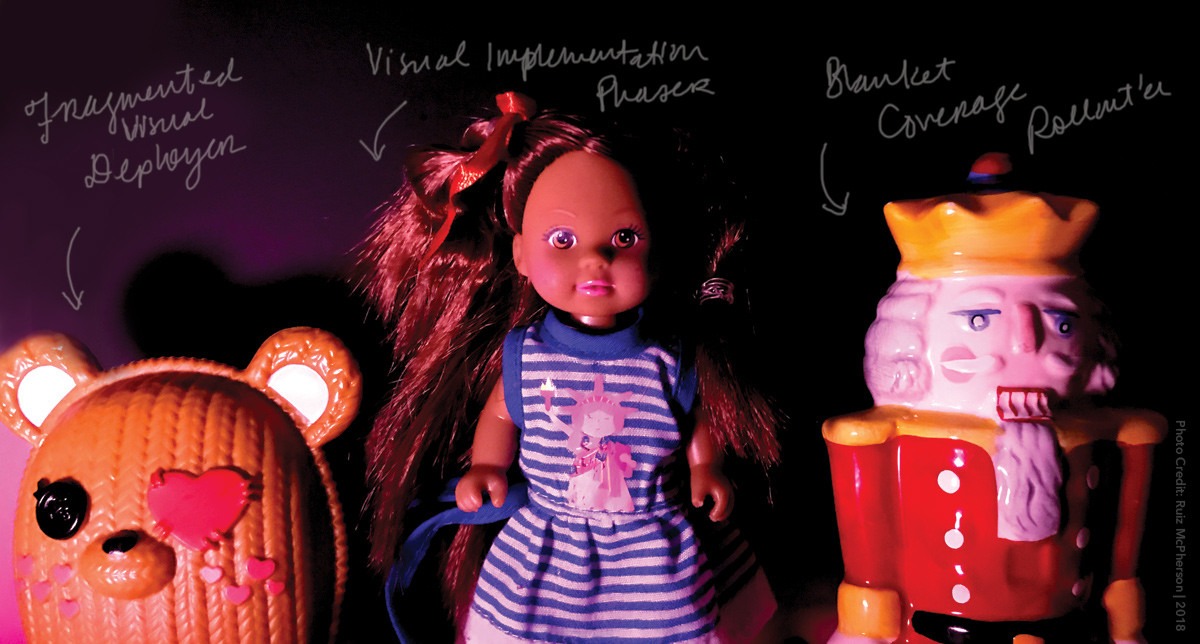3 Visual Strategy Personas: Which One Describes You?

Twenty-three years thus far into a highly-visual digital strategy career, I find myself reflecting on what I've learned along the way.
When I first began my career in the late 90s, I never imagined I'd be contributing, assisting, or leading visual-centric projects, from concept to launch — and everything in between.
And since my very first web design project in the early 2000s, I've witnessed the intensity for heightened visuals — needed across interfaces and user experiences, email layouts, social media content, and branding collateral — grow exponentially, year after year.
With every passing 365 days, clients and employers want more aesthetic visuals, upgraded looks, and refreshed styles.
It never ends (nor should it).
The insatiable demand for design, photos, visual depictions, and branded imagery feels, at times, unsatisfiable.
And the quest to strike a healthy balance of differentiated graphics aligned with brand standards (within budget) doesn't ever get easier, especially for organizations with leaner wallets.
Over the past two decades, I've designed pretty much anything you can imagine under the visual sun.
And during my time at the visual forefront, I've learned a lot about creative projects -- and the clients and organizations enacting them.
Specifically, when it comes to the stakeholders or clients requesting design work of any kind, I've come to identify the following three types of visual strategy personas:
1) Fragmented Visual Deployers
In a Fragmented Visual Deployer environment, clients and employers casually recognize their imagery and overall look could loosely benefit from a quickie boost here or there.
These organizations usually meet one of the following criteria:
- they have ample budget but are unmotivated to do more than an occasional (and limited) visual splurge;
- they are cash-strapped and do not have the budget to invest in a more concerted visual effort, or
- they aren't sold on a full-blown visual makeover, believing such an effort has little, if any, impact to brand goals or bottom lines.
As a result of the above, and in true onesie-twosie fashion, these organizations end up tasking designers and marketers with sprucing up brand visuals in a measured or sporadic fashion.
This stitched approach scrapes on by, limiting the organization from projecting a defined, clear visual strategy.
2) Visual Implementation Phasers
In a Visual Phaser Implementation scenario, the client or employer isn't as limited by budget and is more amenable to imagery upgrades.
Instead of slow-dripping updated images at random, these organizations instead choose to make necessary changes to their visual strategy in an incremental way. This phased approach requires planning to determine which brand assets are to receive visual makeovers first.
Sometimes, these waves of visual change are prompted by a merger between companies, the launch of a new product, or the desire to pivot marketing and sales in a new direction.
Whatever the case, the visual transformation is implemented in timed waves.
3) Blanket Coveragers
Unlike the Fragmenters and the Phasers, Blanket Coveragers are clients or employers determined to birth visual transformation projects in one collective swoop.
This visual strategy approach often requires months of work and planning to transition the look, styles, and overall presence of a brand from top to bottom.
While budget is always a concern, Coveragers are committed to revamping their entire visual footprint throughout an organization in holistic fashion.
Sound familiar?
If you're a Creative or a marketing professional, these visual strategy personas should sound familiar.
No matter which visual strategy persona you work with (or which you may be yourself), the more important detail to remember is that visual strategy approaches will vary widely and strongly depend on how much value is (or isn't) placed on pictorial communications.
Post a comment